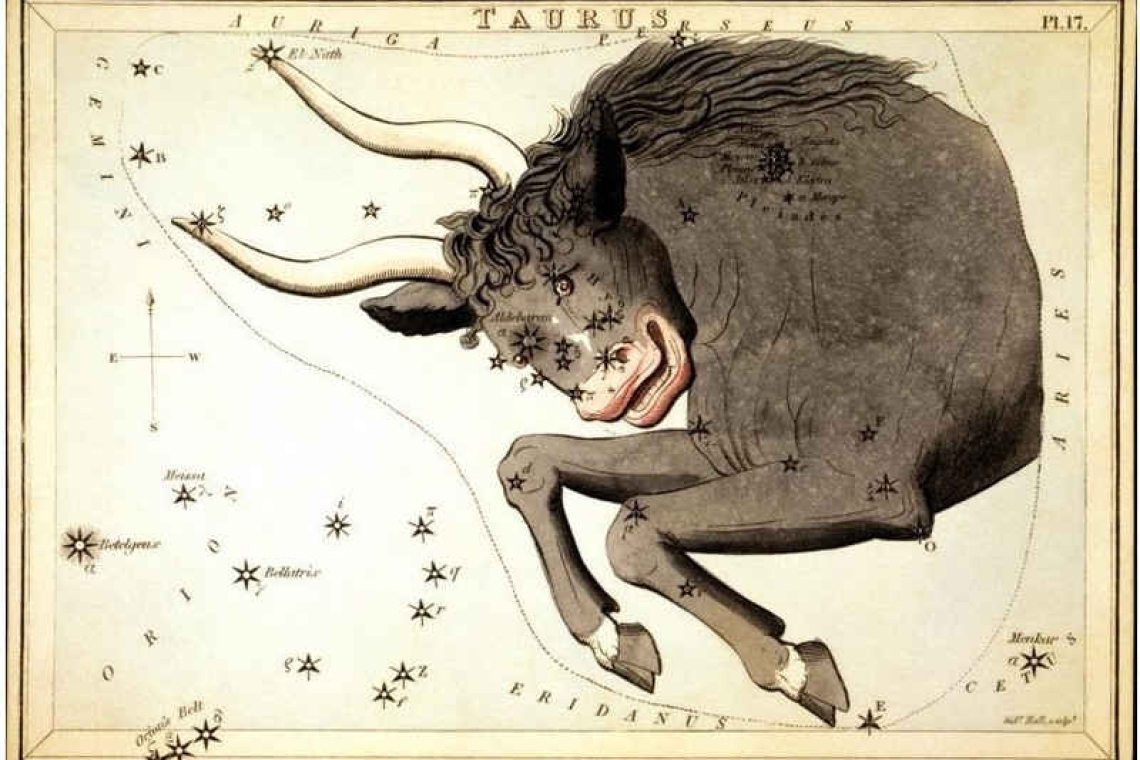~ St. Maarten’s Backyard Astronomy for December 13 - 15 ~
Sun rises at 6:35am
Sun sets at 5:38 pm
Lunar phase: Full moon on Sunday
Moon sets at 5:44am, Saturday
Moon rises at 5:00pm, Saturday
This weekend, the moon is super bright and that will limit our star gazing to only the most brilliant stars and the brightest planets. Just after sunset on Saturday, you can see Saturn in the high southern sky and Jupiter leading the full moon up from the eastern horizon. Venus graces the western horizon and sets early.
Let’s take a deep dive into a very bright star in a constellation you know well. The star is Aldebaran, and the constellation is Taurus the Bull. Aldebaran is the 14th brightest star in the entire sky and it has a distinctive reddish-orange light. This lends itself to its nickname, the Eye of the Bull. Taurus the Bull is considered to be one of the dominant winter constellations of the northern hemisphere. By early December, Taurus rises shortly after sunset and is visible all night. Of course, for those of us star-gazing near the Equator, the star pattern is easily found all year round, so for us, Taurus is year-round delight.
If you know the constellation Orion, it’s easy to “star-hop” to Taurus. Orion’s three-star belt leads your eye along a straight, short imaginary line to where you can see a V-shaped pattern. That is the face of the Bull! His horns extend the V-shape into longer lines beyond that “V”. I like to reach my hand making up a peace sign with two fingers, and over that V-shaped group of stars. The size of the pattern in the sky is about the same as your fingers. And this V shape actually has a name, the Hyades.
We get the name Aldebaran from the Arabic word for “follower”, presumably as a hunter following prey, which was likely the star cluster we call the Pleiades star cluster, imagined as a flock of birds. Ancient Persians honored Aldebaran, one of the Four Royal Stars – the other three being Regulus, Antares and Fomalhaut. In Hindu myth, Aldebaran was a beautiful young woman, disguised as an antelope, and pursued by her lecherous father, disguised as a deer, Mriga. Several other ancient peoples associated the star with rain. In a Dakota Sioux myth, Aldebaran was a star which had fallen to the Earth and whose killing of a serpent led to the formation of the Mississippi River.
Aldebaran is about 153 times brighter than our sun. It is about 65 light-years away from us. Interestingly, in about two million years, the NASA space probe Pioneer 10, now heading out into deep space, will pass Aldebaran. That assumes, of course, that the tiny delicate space probe survives that long.
Thank you for keeping up with the Night Sky articles, backyard (or beach) astronomy designed for St. Maarten sky viewing. FYI: If you are out later on in the week, note that each star rises about four minutes earlier each day than written here, and the moon rises 50 minutes later. Night Sky is researched and compiled by Lisa Davis-Burnett. Earthsky.org is a key resource for information and images. Questions or comments? Email This email address is being protected from spambots. You need JavaScript enabled to view it..







